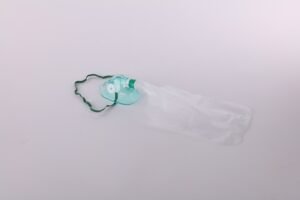Throat swabs are divided into nasopharyngeal swabs and oropharyngeal swabs.
(1) Nasopharyngeal swab is a sampling tool for extracting epithelial cells and secretions from the nasopharyngeal area. The sampling method is to use a sterile nasal swab to penetrate deep into the nasal cavity and reach the nasopharynx to extract secretions and nasopharyngeal epithelial cells by rotating or wiping, and then place the nasal swab with secretions on the virus Inside the sampling tube, carry out pathogenic testing.
Note: Our body will not get used to this action. On the one hand, it can activate the lacrimal reflex, which means that if done correctly, it will stimulate tearing. Since the swab also touches the back of the throat, it may also trigger the vomiting reflex.
(2) The oropharyngeal swab is a sampling tool for extracting mucosal cells and secretions from the oropharynx. The sampling method is to use sterile throat swabs and other items to penetrate deep into the pharynx, go through the root of the tongue to the posterior pharynx, tonsil crypts, side walls, etc., wipe the left and right sides repeatedly for 2 to 3 times, and gently take out the swab. Then put the swab stained with mucosal cells and secretions into the virus sampling tube. Submit for pathogenic testing.
Note: When sampling oropharyngeal swabs, the patient should try to open his mouth as much as possible, and the medical staff should observe the pharynx repeatedly before sampling. In order to avoid affecting the test results, the throat swab for bacterial culture should be sampled before taking antibiotics as much as possible. It is best to take oropharyngeal swab sampling before eating, and gargle before sampling. Avoid touching the tongue, dangling body, oral mucosa and saliva when sampling and removing the swab.
2. Are there other virus tests?
Saliva is another type of specimen that is being explored, and preliminary data does seem to be very promising. But we are still waiting for larger studies to confirm these preliminary findings. In addition to nucleic acid testing that can detect viral genetic material, antigen testing can also be used to detect viral proteins that stimulate antibody production or the immune system’s response to invaders. Although antigen tests are faster, they are also much more sensitive than nucleic acid tests. Therefore, even if a positive antigen test is beneficial, a negative result needs to be confirmed by a more sensitive accounting test.
3. What should I do if I need to be tested for infection?
There are also designated hospitals in every city. You can register to make an appointment through the official website of the hospital. Generally, nucleic acid tests are carried out in the morning, and the results can now be obtained the next day.
4. Is it possible for me to get a false negative test result?
This is a common problem, and it is important to point out that patients who are in the early stages of infection and asymptomatic may have negative test results. Repeated tests on this individual are likely to be positive because the amount of virus in their body has increased to a detectable level. If your doctor believes that the suspicion index for the new coronavirus is high, they may repeat the test to confirm the initial results.
5. Does a negative nucleic acid test eliminate the possibility of infection?
If the nucleic acid test is negative, the new coronavirus infection cannot be completely ruled out. The virus mainly invades the mucosa of the lungs, but relatively few infringements on the mucosa of the upper respiratory tract. Therefore, some patients have now found that the nucleic acid test of the throat swab was negative once, twice or even three times, but it was only found to be positive after the fourth time or the sputum check. According to the epidemiological history, if you do have a history of close contact with the virus, even if it is negative once or twice, you must be highly vigilant. You can do it over and over again, or you can save a sputum sample for nucleic acid testing. Therefore, if the result is negative, you need to test again, and the risk can be ruled out if the measurement is negative several times





